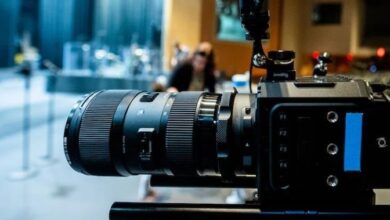
6 Tips On How To Get A Deaf Person’s Attention with Digital Signage
Approximately 600,000 people in the US are deaf, and 6,000,000 have hearing problems. Overall, about 35,000,000 people report having a hearing problem. These are potential customers that your business should consider when putting up digital signage systems for marketing. Recommendable ways to grab their attention include maintaining eye contact, stomping, facial expressions, and body language. Unfortunately, these tactics may not be applicable to your digital signage systems.
That brings us to the importance of making your business ADA-compliant. In other words, you must adhere to the rules outlined in the Americans with Disabilities Act (ADA). The law’s goal is to ensure people with disabilities can access the same rights and services as hearing individuals.
Remember that audio content doesn’t effectively communicate to the deaf community. Consequently, this post delves into how to get a deaf person’s attention with digital signage, even as you target the hearing community.
1. Pay Attention to ASL, BSL, and Video Quality Requirements
Deaf people are enthusiastic about using technology. Nonetheless, they’re often frustrated by the current poor performance, jerky movements, and poor picture quality of video content. Therefore, it’s necessary to optimize video walls and other video communication systems for deafblind users.
One way to achieve this is to have a BSL or ASL interpreter for your digital signage video content. However, American Sign Language and British Sign Language interpreters must also meet specific standards. These are outlined by the International Telecommunication Union for sign language video communication. For example, video quality requirements include:
- A frame rate of at least 25 frames/second
- Sufficient spatial and temporal resolution to capture the signer’s movements
- A minimum of standard, intermediate format (CIF) resolution
2. Incorporate Subtitles and Closed Captions into Your Videos Content
Check to see that subtitles and captions accompany all your digital signage content. Subtitles make video content accessible to deaf parents, deaf children, and deaf students alike.
Captions are a transcription of the video’s spoken language or action. They may include speaker differentiation, background noises, and other crucial audio information in some cases. Markedly, captions help a deaf or hard-of-hearing person understand the video without sound.
On the other hand, subtitles add value to a video because they’re a translation of a video’s transcription. Additionally, they provide the viewer with a real-time experience of the video’s content.
3. Less Is Often More
In trying to understand how to get a deaf person’s attention with digital signage, you may think of providing mountains of text on video content. Sadly, blocks of text on your digital signage will only kill the audience’s attention faster than a hypnotist’s finger snap. If you can say something with an image, especially on your social media feeds, so be it. The deaf audience won’t stop in their tracks to read lengthy blocks of text. Research shows that messages with less than 250 characters boost engagement levels by 60%.
4. Keep It Moving
The motion of digital signage displays attracts 400% more attention than static displays. While live videos are an excellent option, consider using simple animations to get a deaf person’s attention. Additionally, consider the type of movement, speed, and direction of the animations. You want to ensure they grab attention for the right reasons.
5. Install Alerting Devices Alongside Digital Signage Displays
Another way to get a deaf person’s attention is to install alerting devices alongside digital signage displays. Items available for customer use should be as deaf-friendly as possible. As an illustration, think of the following:
- Deaf-friendly doorbell that flashes a light when pressed
- A flashing or vibrating alarm clock
- Fire alarms with a flashing light source as they make noise
- Carbon monoxide detector
- Easy-to-access text-messaging gadgets
- Weather alerts with light alerts that indicate the severity of the alert
Additionally, research other devices that use vibrations or flashing lights to alert people with hearing loss in a respectful way.
6. Provide Equipment for Hard-of-Hearing Customers
If your business is in a noisy environment, an induction loop amplifier can help you get a deaf person’s attention. It’s a unique sound system that transfers sound directly to the hearing aids that people with hearing difficulties use. As such, they enhance the users’ hearing capacity by enhancing their residual hearing capability.
Providing such equipment in your business can make it easier for your deaf customers to connect with your digital signage content. Besides, the gadgets are a step towards ensuring your business is ADA-compliant.
Grabbing Your Deaf Audience’s Attention with Digital Signage
Your business has to be ADA-compliant to avoid penalties and costly lawsuits. Likewise, knowing how to get a deaf person’s attention with digital signage gives your business a competitive edge. Undeniably, a company that values accessibility and inclusivity will likely have more customers than one that doesn’t.
With a few tweaks here and there, you’ll be in accord with your customer’s expectations and adherence to the law. As a tip, be sure to research the deaf culture to determine what’s acceptable in trying to get attention.





